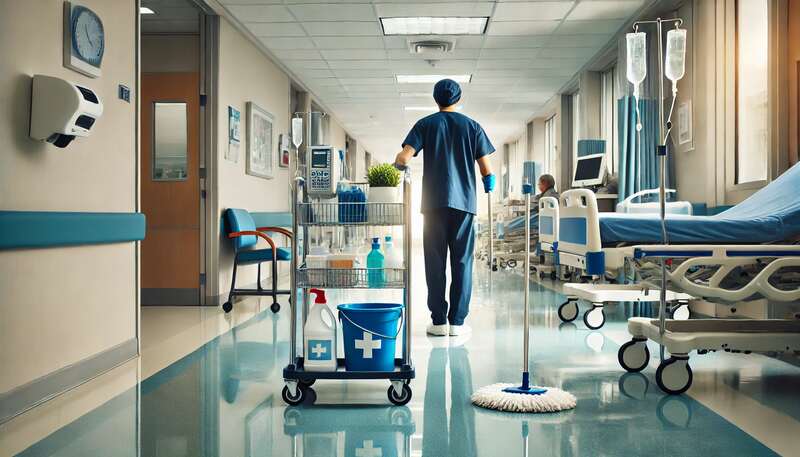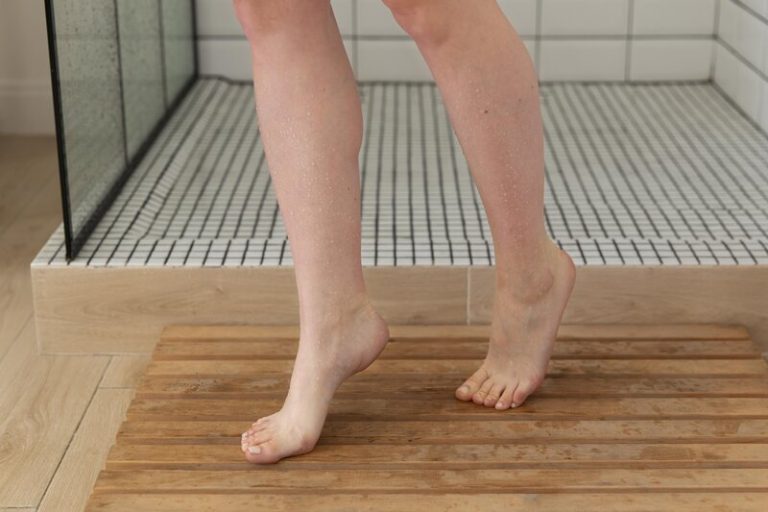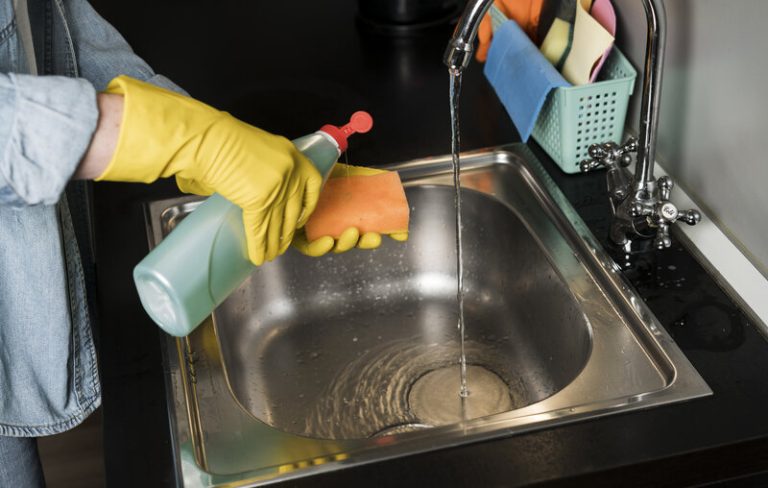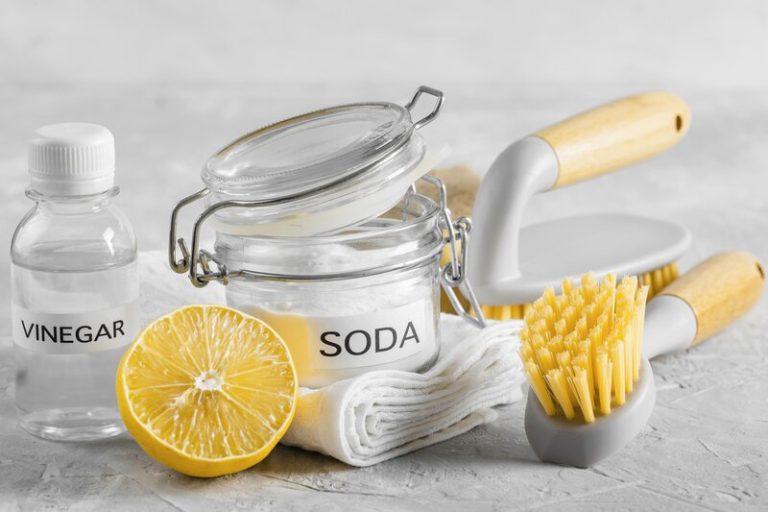Maintaining a clean and sterile environment in hospitals is paramount to patient safety and the overall effectiveness of healthcare services. A hospital cleaning checklist serves as a fundamental tool in achieving this goal, ensuring that every corner of the facility meets the highest standards of cleanliness and hygiene.
In this comprehensive guide, we delve into the critical components of a hospital cleaning checklist, its significance, and how it contributes to a safer healthcare environment.
The Importance of Cleanliness in Hospitals
Hospitals are environments where individuals with various health conditions converge, making them hotspots for potential infections if not properly managed. The spread of healthcare-associated infections (HCAIs) poses a significant risk to patients, staff, and visitors alike. Effective cleaning protocols, guided by a well-structured hospital cleaning checklist, are essential in mitigating these risks.
The Impact of Healthcare-Associated Infections
HCAIs can lead to prolonged hospital stays, increased medical costs, and in severe cases, mortality. Common infections include Methicillin-resistant Staphylococcus aureus (MRSA), Clostridium difficile (C. diff), and surgical site infections. Implementing rigorous cleaning standards is crucial in preventing the transmission of these infections.
Standards and Regulations Governing Hospital Cleanliness
In the United Kingdom, the National Health Service (NHS) provides stringent guidelines to ensure hospitals maintain optimal cleanliness levels. Compliance with these standards is not only a legal requirement but also a moral obligation to safeguard public health.
a. NHS Cleaning Specifications
The NHS outlines specific cleaning frequencies and methods for different areas within a hospital. These specifications consider the risk levels associated with various zones, categorising them into high, medium, and low-risk areas. A hospital cleaning checklist must align with these guidelines to ensure comprehensive coverage.
b. Infection Control Standards
Infection prevention and control (IPC) standards dictate practices that minimise the risk of infection transmission. These include proper waste disposal, use of personal protective equipment (PPE), and adherence to cleaning protocols outlined in the hospital cleaning checklist.
Components of a Hospital Cleaning Checklist
An effective hospital cleaning checklist encompasses all areas within the facility, detailing specific tasks and frequencies. Below are the critical components that should be included:
Patient Rooms
- Daily Cleaning Tasks:
- Clean and disinfect bed rails, bedside tables, and patient equipment.
- Empty and sanitise waste bins.
- Sweep and mop floors with appropriate disinfectants.
- Periodic Deep Cleaning:
- Steam clean curtains and upholstery.
- Disinfect walls and ceilings.
Operating Theatres
- Before Each Procedure:
- Sterilise surgical instruments and surfaces.
- Ensure all equipment is free from contaminants.
- After Each Procedure:
- Dispose of single-use items appropriately.
- Clean and disinfect all surfaces and equipment.
Common Areas
- Reception and Waiting Areas:
- Wipe down chairs and tables.
- Clean touchscreen devices and kiosks.
- Corridors and Stairwells:
- Regularly mop floors.
- Dust and disinfect handrails.
Bathrooms and Toilets
- Routine Cleaning:
- Disinfect toilets, sinks, and taps.
- Refill soap dispensers and paper towel holders.
- High-Frequency Touchpoints:
- Clean door handles and light switches.
Equipment Cleaning
- Medical Devices:
- Follow manufacturer guidelines for cleaning sensitive equipment.
- Use appropriate disinfectants that do not damage equipment.
- Non-Medical Equipment:
- Clean computers, phones, and other administrative devices.
High-Touch Surfaces
- Regular Disinfection:
- Door handles, light switches, and elevator buttons.
- Bedside controls and remote devices.
Daily Cleaning Tasks
Daily cleaning is the backbone of hospital hygiene, focusing on areas with high patient interaction and potential contamination.
a. Importance of Daily Cleaning
Regular cleaning reduces the microbial load on surfaces, decreasing the likelihood of infection transmission. The hospital cleaning checklist should prioritise high-traffic areas and frequently touched surfaces for daily disinfection.
b. Specific Daily Tasks
- Floor Care:
- Sweep and mop with hospital-grade disinfectants.
- Surface Disinfection:
- Wipe down countertops, desks, and medical carts.
- Waste Management:
- Remove general and clinical waste promptly.
Weekly and Monthly Cleaning Tasks
Beyond daily routines, certain tasks require less frequent attention but are equally important.
a. Weekly Tasks
- Deep Cleaning of Patient Rooms:
- Move furniture to clean underneath.
- Sanitize less frequently touched surfaces.
- Laundry Management:
- Wash and disinfect curtains and linens.
b. Monthly Tasks
- Ventilation Systems:
- Clean air ducts and replace filters.
- Equipment Maintenance:
- Inspect and service cleaning equipment.
Training and Staff Responsibilities
Effective cleaning relies on well-trained staff who understand the importance of their role in infection prevention.
a. Importance of Trained Cleaning Staff
Proper training ensures that cleaning personnel use the correct methods and chemicals, adhere to safety protocols, and recognise areas requiring special attention.
b. Assigning Responsibilities
- Clear Roles:
- Define tasks for each team member.
- Accountability:
- Use the hospital cleaning checklist to track completed tasks.
Use of Technology in Cleaning
Advancements in technology have introduced innovative solutions to enhance hospital cleaning practices.
a. Modern Tools and Disinfectants
- Ultraviolet (UV) Light Devices:
- Use UV light to disinfect surfaces without chemicals.
- Electrostatic Sprayers:
- Apply disinfectants more evenly and efficiently.
b. Monitoring and Auditing
- Digital Checklists:
- Implement electronic hospital cleaning checklists for real-time tracking.
- Auditing Software:
- Monitor compliance and identify areas for improvement.
Benefits of a Comprehensive Hospital Cleaning Checklist
Implementing a detailed hospital cleaning checklist offers numerous advantages that extend beyond basic hygiene.
a. Reducing Infections
A systematic approach to cleaning significantly lowers the incidence of HCAIs, protecting patients and staff.
b. Improving Patient Satisfaction
Clean environments contribute to a positive patient experience, influencing their perception of care quality.
c. Compliance with Regulations
Adhering to cleaning standards ensures that the hospital meets legal requirements and avoids penalties.
Challenges and Solutions in Hospital Cleaning
While the importance of hospital cleaning is clear, several challenges can hinder effective implementation.
a. Common Challenges
- Resource Limitations:
- Budget constraints affecting staffing and equipment.
- Staff Turnover:
- High turnover leading to inconsistent cleaning practices.
b. Practical Solutions
- Efficient Resource Allocation:
- Prioritise high-risk areas in the hospital cleaning checklist.
- Continuous Training:
- Invest in regular training programmes to maintain high standards.
The Role of Management in Upholding Cleaning Standards
Leadership plays a crucial role in enforcing cleaning protocols and fostering a culture of cleanliness.
a. Policy Development
- Establish Clear Guidelines:
- Develop policies that support the hospital cleaning checklist.
- Regular Review:
- Update cleaning protocols in response to new health threats.
b. Support and Recognition
- Empower Staff:
- Provide necessary tools and resources.
- Acknowledge Efforts:
- Recognise the contributions of cleaning staff to overall patient care.
Environmental Considerations in Hospital Cleaning
Balancing effective cleaning with environmental sustainability is increasingly important.
Eco-Friendly Cleaning Products
- Non-Toxic Disinfectants:
- Use products that are effective yet environmentally friendly.
- Sustainable Practices:
- Implement recycling programmes and reduce waste.
Conclusion
A well-structured hospital cleaning checklist is indispensable in maintaining a safe and hygienic healthcare environment. It ensures that all areas of the hospital are consistently cleaned to the highest standards, significantly reducing the risk of infections.
By prioritising cleanliness, hospitals not only comply with regulations but also enhance patient satisfaction and safety. Continuous training, effective management, and the integration of modern technologies further strengthen cleaning practices. In an ever-evolving healthcare landscape, steadfast commitment to meticulous cleaning remains a cornerstone of quality patient care.
Ensuring that your hospital adheres to the highest cleaning standards is vital for safeguarding both patients and staff. While maintaining cleanliness in-house is essential, partnering with a professional service like TEKA Cleaning guarantees thorough and reliable results. Their specialised commercial cleaning services provide the deep cleaning needed to meet the rigorous demands of healthcare environments.
Rather than managing cleaning tasks yourself, trust TEKA Cleaning for a more efficient and effective solution. Their expert team will ensure your hospital remains spotless and compliant, reducing infection risks. Call TEKA Cleaning today on 01223 751 544 to secure top-tier commercial cleaning tailored to your needs.
Read also:











